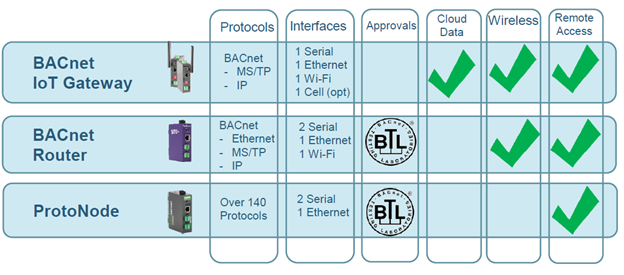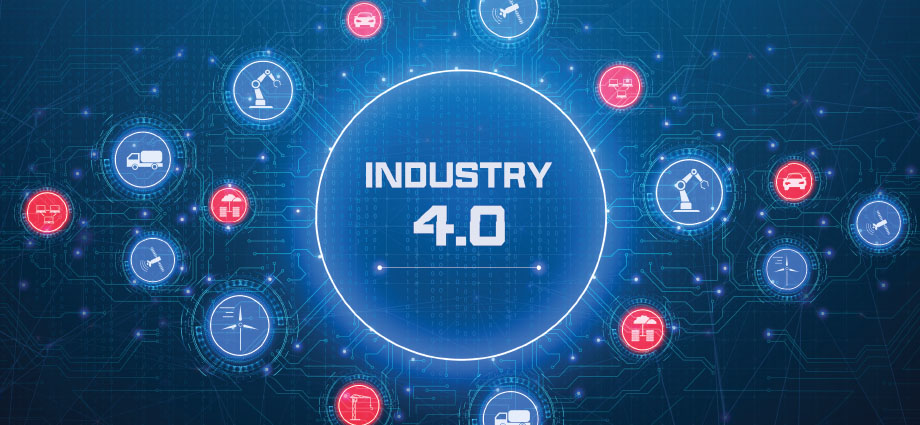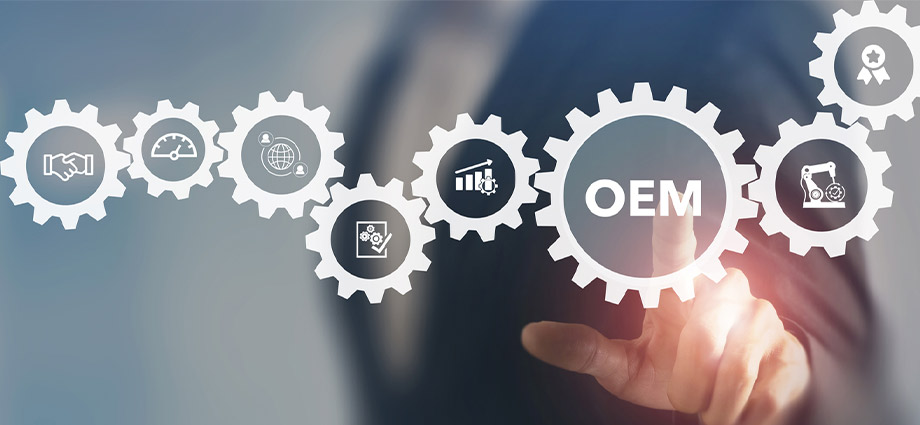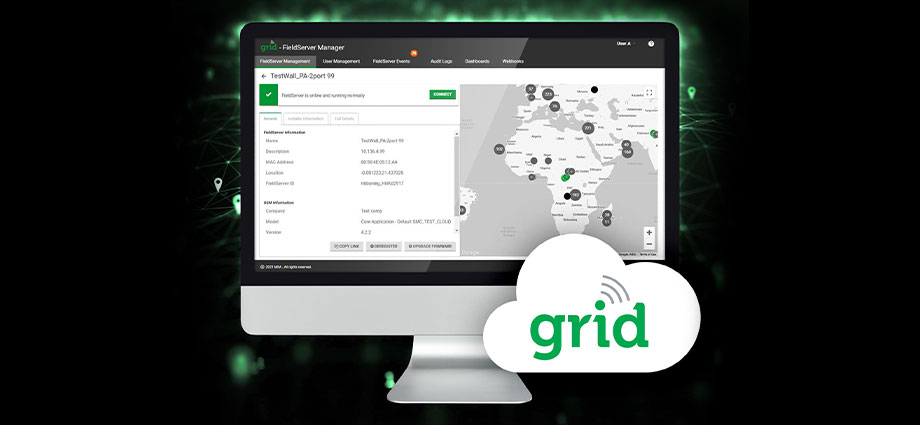
When it comes to automation and smart operations, there’s always a need to know more — faster. Because this need for more responsive, agile, data-driven decision making will continue to grow, so, too, will the use of smart, connected devices.
These devices are underutilized, however, without the help of a multi-protocol Internet of Things (IoT) gateway.
What is a gateway?
At its core, a gateway is a bridge that enables secure, encrypted connection between disparate devices, applications, and platforms. It solves the problem of getting disparate devices and components to “talk” with each other, with a network, and with the Cloud.
Simple enough, right?
Wrong—unless you have the right gateway. Whether you’re a systems integrator in need of simple-to-configurate connectivity, a systems engineer looking to protect your organization’s data integrity, or a building manager wanting to automate a facility, here’s your guide to finding the right gateway for your needs.
Guide to FieldServer Gateway Products
BACnet Router
What is it?
Our FieldServer BACnet Router is a cost-effective, versatile interoperability solution that enables a physical connection between BACnet MS/TP and BACnet/IP networks, via an easy-to-configure web interface.
Features
- Dual RS-485 ports
- Allows for connection of up to 64 devices to a network
- Wi-Fi option for BACnet/IP connection
- Includes a built-in BACnet Explorer
- Supports BBMD
Benefits
- Set-and-forget configuration
- Easy-to-use configurations options
- Reduced troubleshooting
- Faster response time
Best For
The FieldServer BACnet Router is an excellent gateway choice for organizations with a BACnet/IP infrastructure. It’s great for building automation, industrial automation, energy management, and remote monitoring. It’s also ideal for organizations that can’t replace legacy Ethernet devices and for anyone needing an affordable alternative for connecting BACnet MS/TP trunks.
BACnet IoT Gateway
What is it?
The FieldServer BACnet IoT Gateway is an industry leading BACnet Explorer with Cloud connectivity. It includes an intuitive graphical interface that provides anywhere, anytime visibility with the MSA Grid and third-party Clouds via MQTT.
Features
- Deploys in hours at any point in the network
- Enables Cloud connectivity for new and legacy BACnet devices
- Discovers BACnet MS/TP and BACnet/IP devices
- Provides secure Wi-Fi, cellular, or wired connectivity
Benefits
- Makes it easy to discover, Cloud-connect, and manage any BACnet device
- Provides immediate remote monitoring, viewing, and troubleshooting
- Enables secure data transfer and comprehensive data logging
- Generates Cloud-based notifications and alarms so users stay informed as events occur
Best For
This is the best plug-and-play choice for organizations looking for a fast, easy way to Cloud-enable BACnet products in the field. This gateway is ideal for extracting operational intelligence from a building or network, too. Plus, it can push up to 1,000 BACnet objects to the Grid.
*Note: IIoT is the acronym for Industrial Internet of Things. IIoT gateways serve the same purpose as IoT gateways, only within an industrial setting. For simplification, we’ve chosen to use IoT throughout this article.
ProtoNode
What is it?
The FieldServer ProtoNode is a low-cost, high-performance gateway option for OEMs in need of a secure interface with their Building Management Systems (BMS). The ProtoNode gateway provides immediate IoT remote monitoring capabilities for all devices in the field.
Features
- 2 Ethernet ports allow data to move seamlessly across disparate subnets
- Dedicated port for Cloud connectivity enhances LAN security from the LAN/Cloud
- Supports up to 10,000 device points
- On-board diagnostics streamline troubleshooting
Benefits
- Connects multiple serial and Ethernet devices to field protocol networks
- Allows for easy interfacing of both new and legacy devices
- Decreases the time it takes to implement an IoT Cloud strategy
- Enables remote monitoring, control, and notifications
Best For
This is the gateway Original Equipment Manufacturers can rely on for secure and seamless Cloud-enablement of devices and device connection to their BMS networks. It’s also ideal for those looking for all-around functionality, including configuration, monitoring, logging, security, diagnostics, and updates.
FieldVEU
What is it?
FieldVEU is a first-of-its-kind mobile app designed to provide anytime visibility into the information OEMs and system integrators need most. FieldVEU interfaces with the connected devices via the Grid FieldServer Manager, providing instant insight into connected devices.
Features
- Displays up to 15 data points per device
- Gives users a choice of pre-set or customizable dashboard views
- Stores device data in the Cloud for easy retrieval
- Scalable to mobile phones and tablets
Benefits
- Provides instant access to data and notifications from Cloud-registered devices
- Puts device function and status at a user’s fingertips
- Reduces field truck expenses
- Sends real-time notifications by email or SMS text message
Best For
The FieldVEU mobile app is for system integrators and OEMS that need instant and remote access to their connected devices. This powerful yet simple-to-use app turns a smartphone or desktop into an all-in-one automation monitoring, analytics, diagnostics, and data repository tool.

Still need help deciding which gateway is right for you? Contact us to get your questions answered or to schedule a demo.
Visit our website to learn more.






